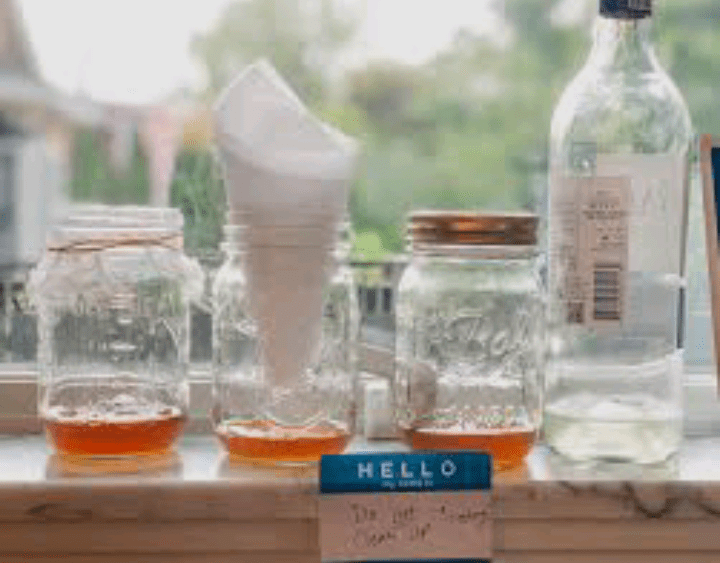Fruit fly trap DIY offers a practical and cost-effective solution for dealing with those tiny, pesky insects that tend to hover around our fruits and vegetables. Fruit flies can quickly become an annoyance in our homes, especially during warmer seasons.
However, making your own fruit fly trap using household items can help manage and reduce their numbers without the need for harmful chemicals. This introduction provides insights into creating efficient fruit fly traps using simple methods and materials.
Fruit flies are attracted to ripe or decaying fruits, where they lay their eggs, leading to a rapid increase in their population. Understanding their behavior is the key to effectively managing their presence in our homes.
These traps can be crafted using readily available items such as apple cider vinegar, dish soap, jars or bottles, and plastic wrap. By setting up these traps in strategic locations, we can lure the fruit flies in and prevent their escape, effectively reducing their numbers over time.
This article aims to provide a comprehensive guide to various DIY fruit fly trap methods, detailing step-by-step instructions for each approach. Moreover, it emphasizes the importance of monitoring, maintenance, and implementing preventive measures to keep fruit flies at bay.
Additional homemade repellents and tips for keeping your home fruit fly-free will also be explored.
By following the methods detailed in this article, you can manage fruit fly infestations in your home, making your living space more pleasant and hygienic. The guide will offer insights and tips in a simple, accessible manner, enabling you to tackle fruit fly problems efficiently using items found around your household.
Read Also: DIY Chicken Coop: A Home for Your Feathered Friends
Fruit Fly Trap DIY

I. Understanding Fruit Flies
Before going into the trap-making process, understanding the behavior and lifecycle of fruit flies is essential. These tiny insects are attracted to ripe or decaying fruits and vegetables, where they lay their eggs.
The eggs hatch into larvae, and the cycle continues. Fruit flies have a short life cycle, allowing them to reproduce rapidly and cause a significant infestation if not managed promptly.
II. DIY Fruit Fly Traps: Methods and Materials
There are several effective methods to create fruit fly traps using readily available household items. Each method aims to lure and trap fruit flies efficiently. Here, we’ll discuss and detail the steps for each approach:
a. Apple Cider Vinegar Trap:
Materials required:
A shallow dish or bowl
Apple cider vinegar
Dish soap
Plastic wrap
Toothpick or fork
Steps:
Pour a small amount of apple cider vinegar into the dish.
Add a drop of dish soap and swirl gently to break the surface tension.
Cover the dish with plastic wrap and secure it with a rubber band.
Using a toothpick or fork, poke small holes in the plastic wrap.
Fruit flies are attracted to the scent of vinegar, enter through the holes, and become trapped in the soapy liquid.
b. Fruit Trap with a Paper Funnel:
Materials required:
Jar or bottle
Ripe or overripe fruit
Paper or stiff paperboard
Tape
Steps:
Place a small piece of ripe fruit in the jar.
Roll the paper into a funnel with a small opening at the bottom.
Secure the funnel’s shape with tape and place it in the jar, ensuring the narrow opening doesn’t touch the fruit.
Fruit flies are lured into the jar through the funnel but have difficulty finding their way out.
c. Red Wine Trap:
Materials required:
Red wine
Dish soap
Plastic wrap
Jar or bottle
Steps:
Pour a small amount of red wine into a jar.
Add a drop of dish soap and gently swirl it.
Cover the jar with plastic wrap and secure it with a rubber band.
Poke holes in the plastic wrap, allowing fruit flies to enter but preventing easy escape.
Read Also: DIY Headboard: Transforming Bedrooms with Your Personal Touch
III. Monitoring and Maintenance
Place the fruit fly traps near areas where fruit flies tend to congregate, such as near fruit bowls, compost bins, or trash cans. Regularly check the traps and replace the contents as needed, especially if the liquid becomes cloudy or filled with flies.
Proper disposal of trapped fruit flies is essential to prevent their escape and potential reinfestation.
IV. Preventive Measures
While traps can effectively manage existing fruit fly populations, taking preventive measures can significantly reduce their occurrence:
Store fruits and vegetables in the refrigerator or sealed containers.
Keep kitchen surfaces clean and promptly wipe up spills.
Regularly empty and clean trash bins and compost containers.
Seal cracks and openings where fruit flies might enter your home.
V. Homemade Fruit Fly Repellents
In addition to traps, homemade repellents can further discourage fruit flies:
Essential Oils: Peppermint, lemongrass, or lavender essential oils can be mixed with water and sprayed in infested areas.
Herbs: Placing basil, mint, or bay leaves near fruit bowls can act as a natural repellent.
Read Also: Everything You Need to Know About Moen Garbage Disposal
